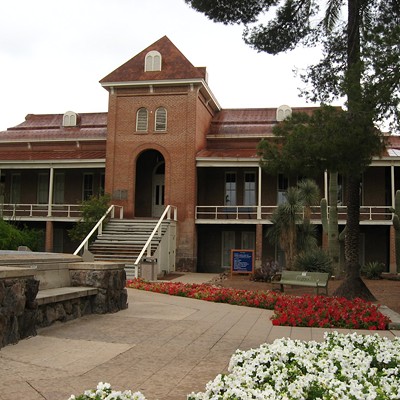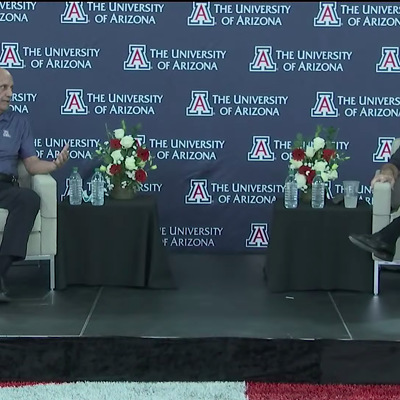The cut responds to Governor Jane Dee Hull's mandate of a 4-percent slice out of the UA budget, and no increase in taxes, as a means of dealing with the state's projected shortfall of $250 million.
General funds from the state constitute 80 percent of the UA budget. Cutting these funds by 4 percent means losing more than 3 percent of the total budget.
The vast majority of the university's expenses, a total of 85 percent, in fact, is in salaries. Because of that, Likins says, "it will be necessary to reduce payroll expenses by somewhere in the neighborhood of $12 million." His solution: a hiring freeze effective October 2 to December 1.
Many UA employees, however, are tenured or under contract, making it impossible to cut their salaries. Who will then bear the brunt of the reduction? Part-time instructors, adjunct professors and teaching assistants in academic programs.
It is unclear how this will affect enrollment at the UA. More students may enroll in order to brush up on job skills because of the current recession, but meanwhile the loss of faculty will result in fewer classes, making it more difficult for students to get the courses they need to graduate on time. One thing that can be counted on is that classes will get larger.
Equipment, operations and utility costs make up the other 15 percent of the UA budget. But, according to a draft response Likins wrote to Hull on September 27, utility costs soared 50 percent over budget last year because while the UA has grown, its utility budget has not. Library acquisitions account for more than half of all equipment costs. And operations is already down to 8 percent, "an artifact of previous budget cuts" according to Likins.
The $46 million rescinded from the UA from 1982 to 1992 coupled with the cuts of the early '90s has "stripped bare" the UA's operations budget, Likins said. Departments typically tried to protect their people by "keeping their secretary and giving away the operating budget," which consists of such items as phone expenses and mailing costs. And when the economy flourished in the late '90s the state legislature "was focused on cutting taxes so they never did restore the revenues" to the UA, Likins complained.
Worse still, Hull has hinted at further cuts and a larger shortfall next year, meaning that the UA will need to make permanent cuts in the future. "I'm not able to even imagine what would happen if we had to go deeper than [$14 million]," said Likins. "A university isn't a very agile enterprise ... a corporation can terminate the people, shut down the plant and sell the thing." Most of the UA's employees, however, are locked into contracts, as is much of the construction.
"If we're told in the next five years we need to make a 10-percent cut, we can respond to that. If we're told in the next five weeks we need to make a 10-percent cut, it's almost impossible," Likins warned. "I don't know what I will do if come December the governor says, 'Thank you for the 14 million. Now give me some more.'"
Adjuncts like Randy Accetta are already well aware that their jobs are expendable.
"When you become an adjunct you know your job is insecure," said Accetta. Consequently he has a full-time job elsewhere. But he likes to teach. "It's very frustrating when you see athletic departments spending more and more. I know athletic departments are self-sustaining [because of the revenue they get from spectator sports], but adjuncts are scrambling for a couple of hundred dollars here and a couple hundred dollars there," Accetta said.
What remains to be seen is how the City of Tucson will deal with the UA's job losses. A 1997-98 UA economic impact study indicated that for every two average-income University of Arizona jobs created, one job sprang up in the community. In other words, the revenue derived from those two UA employees as they pay taxes and purchase goods creates a job outside the university.
Conversely, the loss of every two average-income jobs at the UA would mean the loss of a job in the community. What's more, for every $1 million the university suspends on construction costs, 11 jobs would be lost for a total of $400,000 in local wages.












